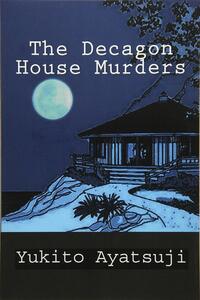Take a photo of a barcode or cover
3.5-- idk if it took me ages to read because I was moving or because it was a bit slow. I suspected Van from the beginning but I lost track of the characters so I wasn't able to guess how he was doing any of it.
A first-rate mystery reminiscent of Agatha Christie's And Then There Were None. With this in mind it was an ideal mystery when I wanted something new, and no overly complicated. It was different enough that if you've read Christie's work it won't be obvious what the solution is. I enjoyed the classic aspects, the story doesn't get cluttered with relationships and side plots that take away from mystery.
The end through me a bit, and i was very confusedwhen I thought Van was dead but then Van was on the mainland. It all made sense once I realized six where dead, not seven. I think I'll be looking for more of this authors work.
The end through me a bit, and i was very confused
adventurous
dark
emotional
mysterious
sad
tense
fast-paced
Plot or Character Driven:
A mix
Strong character development:
Complicated
Loveable characters:
No
Diverse cast of characters:
Yes
Flaws of characters a main focus:
Complicated
adventurous
mysterious
medium-paced
Plot or Character Driven:
A mix
Strong character development:
No
Loveable characters:
No
Diverse cast of characters:
No
Flaws of characters a main focus:
Yes
mysterious
tense
medium-paced
Plot or Character Driven:
Plot
Strong character development:
No
Loveable characters:
No
Diverse cast of characters:
No
Flaws of characters a main focus:
Yes
mysterious
tense
fast-paced
Plot or Character Driven:
Plot
Strong character development:
No
Loveable characters:
Yes
Diverse cast of characters:
No
Flaws of characters a main focus:
Yes
Detailed review may come later. Definitely a gripping read, but in my opinion not a good mystery novel. Makes me want to read more canonical mystery fiction though.
For full disclosure, I picked up The Decagon House Murders by Yukito Ayatsuji for one proximal reason - I saw an e-ARC for The Mill House Murders by the same author become available, and thought I’d read the two together (look out for that review tomorrow). But further than that, our family is a great fan of Golden Age mysteries, particularly of the locked room variety - my childhood copy of And Then There Were None has been read at least 10 times - and I was curious how the locked room mystery would translate across cultures and time.
At its surface level, The Decagon House Murders is an homage to that same spirit of Golden Age mystery, and self-consciously references it. The premise: members of the K- University Mystery Club, each named after some of the great mystery writers (Agatha, Carr, Ellery, etc) venture for a retreat on an island on which four unsolved murders occurred, only to start themselves turning up dead, and they must work together to solve the mystery before it’s too late. The plot includes the common tropes - an isolated island, locked rooms - and even does this in duplicate - with the readers and the Mystery Club solving both the four unsolved murders of the past, and the ongoing murders of the present in parallel.
Ultimately, though, the author’s vision for this book appears to exceed his ability to execute it. The homages to the Golden Age writers feels like the author is winking knowingly at the reader. While this could have worked with a playful tone, the author is serious - perhaps too serious throughout, for a book marked to adults about young adult detectives. More damningly, the identity of the murderer (the whodunit) is predictable and yet the final solution (the howdunit) strains credulity, and I found the ending to be unsatisfying.
In the end, I can recommend The Decagon House Murders only to a true completionist fan of locked room mysteries or Japanese locked room mysteries. There are better examples of the genre out there - including Ayatsuji’s next installment, The Mill House Murders.
At its surface level, The Decagon House Murders is an homage to that same spirit of Golden Age mystery, and self-consciously references it. The premise: members of the K- University Mystery Club, each named after some of the great mystery writers (Agatha, Carr, Ellery, etc) venture for a retreat on an island on which four unsolved murders occurred, only to start themselves turning up dead, and they must work together to solve the mystery before it’s too late. The plot includes the common tropes - an isolated island, locked rooms - and even does this in duplicate - with the readers and the Mystery Club solving both the four unsolved murders of the past, and the ongoing murders of the present in parallel.
Ultimately, though, the author’s vision for this book appears to exceed his ability to execute it. The homages to the Golden Age writers feels like the author is winking knowingly at the reader. While this could have worked with a playful tone, the author is serious - perhaps too serious throughout, for a book marked to adults about young adult detectives. More damningly, the identity of the murderer (the whodunit) is predictable and yet the final solution (the howdunit) strains credulity, and I found the ending to be unsatisfying.
In the end, I can recommend The Decagon House Murders only to a true completionist fan of locked room mysteries or Japanese locked room mysteries. There are better examples of the genre out there - including Ayatsuji’s next installment, The Mill House Murders.
adventurous
challenging
emotional
mysterious
reflective
sad
medium-paced







